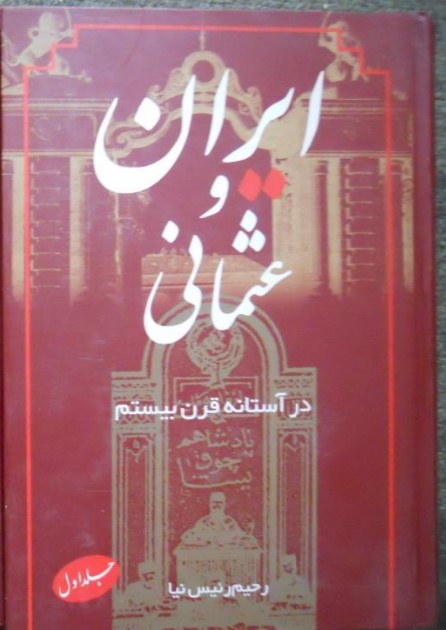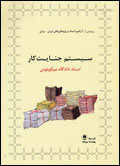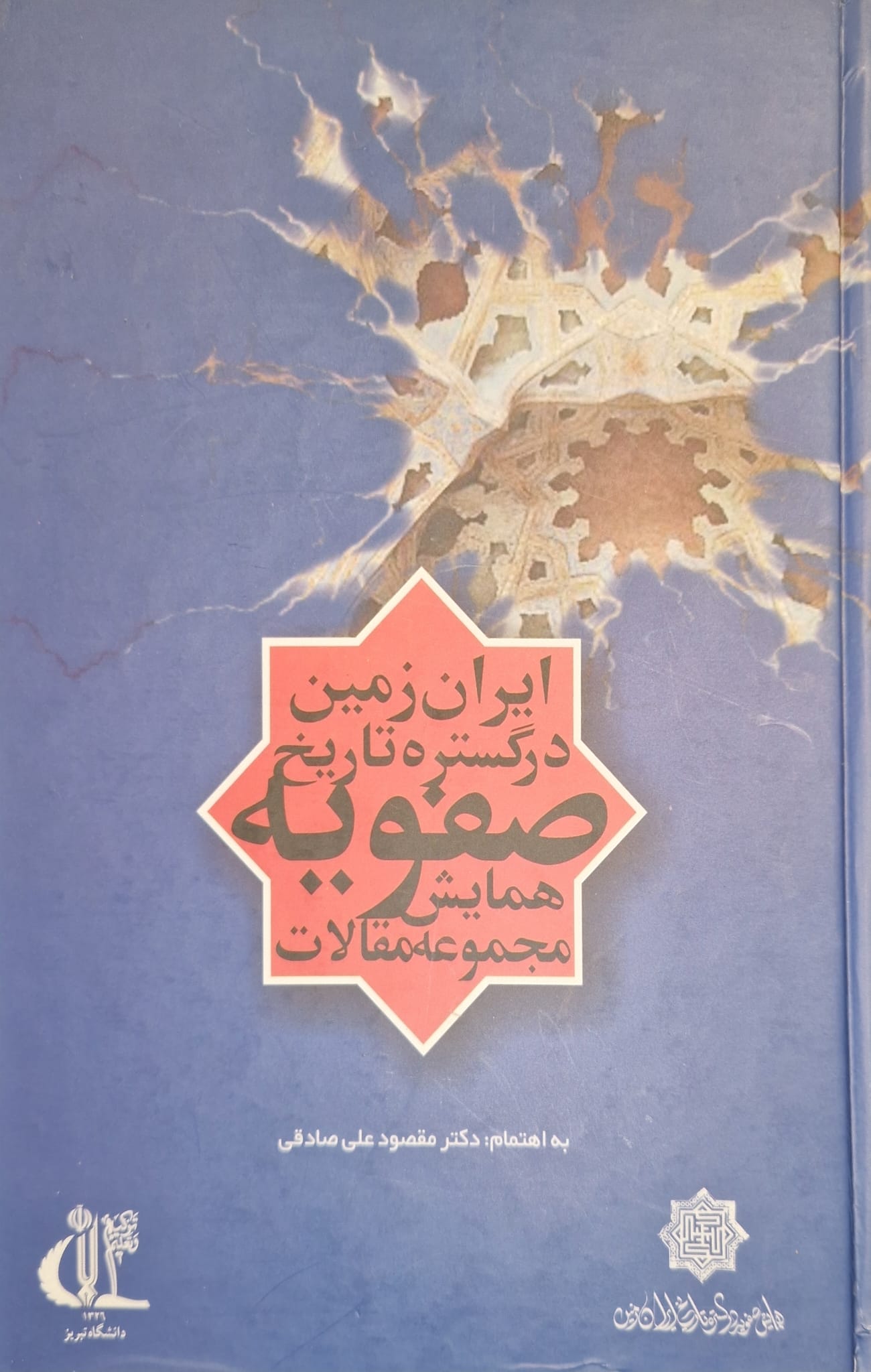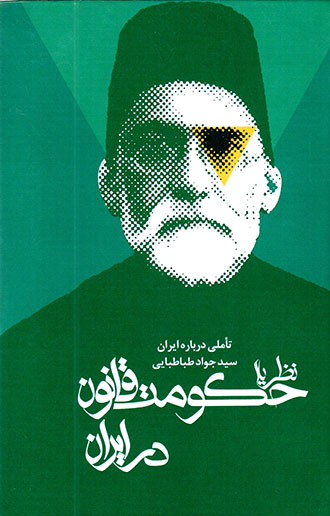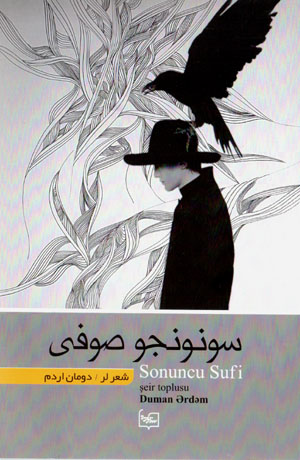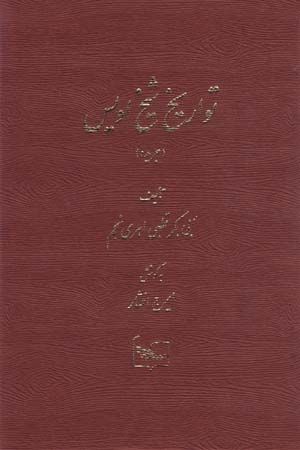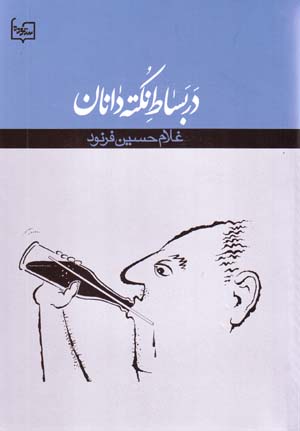Īrān va 'Us̲mānī dar Āstānah-yi Qarn-i Bīstum: Persiska (Farsi)
ایران و عثمانی در آستانه قرن بیستم
48,95 €
Dela
Wishlist
Although the Islamic civilization has covered a wide geographical area from the west and the heart of Africa to behind the walls of China and the southern parts of the Indian subcontinent, throughout history, two Iranian and Ottoman figures have been its most important representatives. The Iranian image of Islamic civilization includes the eastern geography of this civilization and the Ottoman image includes the central and western parts of the Islamic world. Although these two are strings of the same instrument, they have spent a large part of their history in disharmony and conflict with each other. It is natural that these inhomogeneities, although they were very heartbreaking for our friends, for our common enemies, whose mysterious and behind-the-scenes faces we always see on both sides of the story, it was a pleasant song. These disharmonies have sometimes progressed to the point where the people of these two regions are unaware of each other and a favorable ground has been provided for the abuses of others.
However, these two powers have been in the space of trade and mutual influence on each other in many parts of history. In the meantime, the literature of both these geographical areas can witness this historical truth. With the arrival of the 19th century, while the governments of Iran and the Ottoman Empire were going through a period of decline and stagnation, the European civilization, which was a rival and a common enemy of Iran and the Ottoman Empire, entered a period of power and influence over its old rivals. This was while the spread of technologies such as the printing press and the telegraph increased the scope of communication and created a new class on both sides of the borders that had new words in different fields of thought. This group, which was also known by names such as the modernists and the enlightened ones, etc., affected the material and spiritual fields of their societies with the spread of new political, cultural, and social ideas, and transformed social and individual relationships. This course, the peak of which was at the beginning of the 20th century, left many historical influences and changes both in Iran and in the Ottoman Empire.
These similarities are not accidental, they undoubtedly originate from a common common trend and indicate the history of the two countries. The intellectual currents and social movements of the two countries also had a lot of mutual effects on each other in the given period, and among these, the Ottoman contribution in transferring various aspects of Western civilization and waves of modernization to Iran is noteworthy and studyable.
Among the books that have been written in this field is the two-volume book "Iran and Ottomans on the Threshold of the 20th Century", which deals with a comparative study of the activities of the intellectual movement in Iran and Ottomans in more than 1,500 pages.
This book is written by Rahim Raisnia, one of the researchers of the contemporary history of Iran and Turkey, who, in addition to researching the thoughts of Iranian intellectuals of the Qajar period in the Ottoman capital, has elaborated on the views of the Ottoman intellectual movement.
more
اگر چه تمدن اسلامی گستره جغرافیای وسیعی به پهنای غرب و قلب آفریقا تا پشت دیوارهای چین و نواحی جنوبی شبه قاره هند را تحت پوشش خود قرار داده، اما در طول تاریخ دو چهره ایرانی و عثمانی از مهمترین نمایندگان آن بوده اند. سیمای ایرانی تمدن اسلامی جغرافیای شرقی این تمدن را در بر گرفته و سیمای عثمانی بخش مرکزی و غربی جهان اسلام را شامل شده است. این دو اگر چه تارهای یک ساز به شمار آمده اند، اما بخش بزرگی از تاریخ خود را به ناهمسازی و تعارض با یکدیگر سپری نمودهاند. طبیعی است که این ناهمگنی ها اگر چه برای دوستان خودی بسیار دلخراش بوده، اما برای دشمنان مشترکی که همواره چهره مرموز و پشت صحنه آنها را در دوسوی قصه شاهدیم آهنگی گوش نواز بوده است. این ناهمآهنگی ها گاه تاجایی پیش رفته است که مردمان این دو منطقه دچار بی خبری از همدیگر شده و زمینه مساعدی برای سواستفاده های دیگران فراهم شده است.
با این همه این دو قدرت در بسیاری از فرازهای تاریخ در فضای داد و ستد با هم و تاثیرگذاری متقابل بر یکدیگر بوده اند. در این بین ادبیات هر دوی این پهنه های جغرافیایی می تواند شاهد این حقیقت تاریخی باشد. با فرا رسیدن قرن نوزدهم میلادی در حالی که حکومت های ایران و عثمانی دوره رخوت و رکود را سپری می کردند، حوزه تمدنی اروپا که رقیب و دشمن مشترک ایران و عثمانی بود، قدم در دوره قدرت و تاثیرگذاری بر رقبای قدیمی خود گذاشته بود. این در حالی بود که با گسترش فناوری هایی چون چاپخانه و تلگراف، وسعت ارتباطات افزایش یافته و طبقه جدیدی در هر دو سوی مرزها که سخنان جدیدی در ساحت های مختلف فکری داشتند ایجاد شده بود. این گروه که با نام هایی هم چون متجددان و منورالفکران و… شناخته میشدند با رواج عقاید نوین سیاسی، فرهنگی و اجتماعی عرصه های مادی و معنوی جوامع خود را متاثر کرده، مناسبات اجتماعی و فردی را دچار تحول می نمودند. این سیر که نقطه اوج آن در ابتدای قرن بیستم بود، هم در ایران و هم در عثمانی تاثیرات و تغییرات تاریخی فراوانی را بر جای گذاشت.
این مشابهت ها تصادفی نبوده، بی گمان از یک روند مشترک عمومی مایه می گیرند و حکایت از وابستگی تاریخ دو کشور با هم دارند. جریان های فکری و جنبش های اجتماعی دو کشور نیز در برهه زمانی مورد نظر تاثیرات متقابل زیادی بر روی هم داشته اند و در این میان سهم عثمانی در انتقال وجوه مختلف تمدن غربی و امواج نوگرایی به ایران قابل توجه و مطالعه است.
از جمله کتابهایی که در این زمینه نگاشته شده است کتاب دو جلدی «ایران و عثمانی در آستانه قرن بیستم» است که در بیش از هزار و پانصد صفحه به مطالعه مقایسه ای سیر فعالیت های جریان روشنفکری در ایران و عثمانی می پردازد.
این کتاب که به قلم رحیم رئیس نیا از پژوهشگران تاریخ معاصر ایران و ترکیه است که علاوه بر پی جویی اندیشه های روشنفکران ایران دوره قاجاری در پایتخت عثمانی به شرح و تبیین مبسوط دیدگاههای جریان روشنفکری عثمانی پرداخته است.
more

